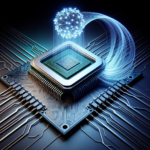Explaining the Use of CPUs in Embedded Systems

Explaining the Use of CPUs in Embedded Systems
Embedded systems are ubiquitous in modern technology, from household appliances to industrial machinery. At the heart of these systems lies the Central Processing Unit (CPU), which plays a crucial role in their functionality. This article delves into the use of CPUs in embedded systems, exploring their importance, types, and applications.
What is an Embedded System?
An embedded system is a specialized computing system that performs dedicated functions or tasks within a larger system. Unlike general-purpose computers, embedded systems are designed for specific control functions, often with real-time computing constraints. They are embedded as part of a complete device, including hardware and mechanical parts.
Characteristics of Embedded Systems
- Dedicated Functionality: Embedded systems are designed to perform specific tasks.
- Real-Time Operation: Many embedded systems operate in real-time, meaning they must process data and respond within a strict time frame.
- Resource Constraints: These systems often have limited processing power, memory, and storage.
- Reliability and Stability: Embedded systems must be highly reliable and stable, as they often operate in critical applications.
The Role of CPUs in Embedded Systems
The CPU, or Central Processing Unit, is the brain of any computing system, including embedded systems. It executes instructions from programs, processes data, and controls other components. In embedded systems, the CPU is tailored to meet the specific needs of the application.
Functions of CPUs in Embedded Systems
- Instruction Execution: The CPU fetches, decodes, and executes instructions from the program memory.
- Data Processing: It performs arithmetic and logical operations on data.
- Control Operations: The CPU manages the operation of other components, such as memory and input/output devices.
- Communication: It facilitates communication between different parts of the system and external devices.
Types of CPUs Used in Embedded Systems
There are various types of CPUs used in embedded systems, each with its own set of characteristics and applications. The choice of CPU depends on factors such as performance requirements, power consumption, and cost.
Microcontrollers (MCUs)
Microcontrollers are compact integrated circuits designed to govern specific operations in embedded systems. They typically include a CPU, memory, and input/output peripherals on a single chip.
- Applications: Used in simple, low-power applications such as home appliances, automotive systems, and consumer electronics.
- Advantages: Low cost, low power consumption, and ease of integration.
Microprocessors
Microprocessors are more powerful than microcontrollers and are used in applications requiring higher processing power. They consist of a CPU but rely on external components for memory and input/output functions.
- Applications: Used in complex systems such as industrial automation, medical devices, and communication systems.
- Advantages: Higher processing power and flexibility.
Digital Signal Processors (DSPs)
DSPs are specialized CPUs designed for high-speed numerical processing, particularly for signal processing applications.
- Applications: Used in audio and video processing, telecommunications, and radar systems.
- Advantages: High performance in mathematical computations and real-time processing.
Application-Specific Integrated Circuits (ASICs)
ASICs are custom-designed chips tailored for specific applications. They can include a CPU along with other specialized components.
- Applications: Used in high-volume products such as smartphones, gaming consoles, and network devices.
- Advantages: Optimized performance, lower power consumption, and reduced size.
Factors Influencing CPU Selection in Embedded Systems
Selecting the right CPU for an embedded system is a critical decision that impacts the system’s performance, cost, and power consumption. Several factors must be considered:
Performance Requirements
The CPU must meet the performance requirements of the application, including processing speed, memory capacity, and input/output capabilities.
Power Consumption
Power consumption is a crucial factor, especially for battery-powered devices. Low-power CPUs are essential for extending battery life and reducing heat generation.
Cost
The cost of the CPU and associated components must align with the budget constraints of the project. Cost-effective solutions are often preferred for mass-produced products.
Integration and Compatibility
The CPU must be compatible with other components in the system, such as memory, sensors, and communication interfaces. Integration ease is also a key consideration.
Development Tools and Support
Availability of development tools, software libraries, and technical support can significantly impact the development process and time-to-market.
Applications of CPUs in Embedded Systems
CPUs in embedded systems are used across a wide range of applications, each with unique requirements and challenges. Here are some common applications:
Automotive Systems
Embedded CPUs are used in various automotive systems, including engine control units (ECUs), infotainment systems, and advanced driver-assistance systems (ADAS). They ensure real-time processing and control for improved safety and performance.
Consumer Electronics
From smartphones to smart home devices, embedded CPUs power a multitude of consumer electronics. They enable features such as touch interfaces, connectivity, and multimedia processing.
Industrial Automation
In industrial settings, embedded CPUs control machinery, robotics, and process automation systems. They provide precise control and monitoring for increased efficiency and productivity.
Medical Devices
Embedded CPUs are integral to medical devices such as diagnostic equipment, patient monitors, and wearable health devices. They ensure accurate data processing and real-time monitoring for better patient care.
Telecommunications
Telecommunication systems rely on embedded CPUs for signal processing, data transmission, and network management. They enable high-speed communication and reliable connectivity.
Challenges in Using CPUs in Embedded Systems
While CPUs are essential for embedded systems, their use comes with several challenges:
Real-Time Constraints
Many embedded systems operate under real-time constraints, requiring the CPU to process data and respond within strict time limits. Meeting these constraints can be challenging, especially in complex applications.
Power Management
Balancing performance and power consumption is a critical challenge, particularly for battery-powered devices. Efficient power management techniques are necessary to extend battery life and reduce heat generation.
Security
Embedded systems are often used in critical applications, making security a top priority. Protecting the CPU and system from cyber threats and unauthorized access is essential.
Scalability
As technology evolves, embedded systems must be scalable to accommodate new features and increased performance requirements. Ensuring scalability while maintaining compatibility with existing components can be challenging.
Future Trends in Embedded CPUs
The field of embedded systems is continuously evolving, with several emerging trends shaping the future of embedded CPUs:
Artificial Intelligence and Machine Learning
Embedded CPUs are increasingly being integrated with AI and machine learning capabilities. This enables intelligent decision-making and advanced data processing in applications such as autonomous vehicles and smart devices.
Edge Computing
Edge computing involves processing data closer to the source, reducing latency and bandwidth usage. Embedded CPUs play a crucial role in enabling edge computing for real-time applications.
Low-Power Design
Advancements in low-power design techniques are driving the development of energy-efficient CPUs. This is particularly important for IoT devices and wearable technology.
Security Enhancements
With the increasing importance of security, future embedded CPUs will incorporate advanced security features to protect against cyber threats and ensure data integrity.
FAQ
What is the difference between a microcontroller and a microprocessor?
A microcontroller is an integrated circuit that includes a CPU, memory, and input/output peripherals on a single chip, designed for specific control applications. A microprocessor, on the other hand, is a more powerful CPU that requires external components for memory and input/output functions, used in complex systems requiring higher processing power.
Why is power consumption important in embedded systems?
Power consumption is crucial in embedded systems, especially for battery-powered devices, as it directly impacts battery life and heat generation. Efficient power management ensures longer operation times and reliable performance.
What are real-time constraints in embedded systems?
Real-time constraints refer to the requirement for an embedded system to process data and respond within a strict time frame. This is essential for applications where timely and predictable responses are critical, such as automotive systems and industrial automation.
How do embedded CPUs contribute to edge computing?
Embedded CPUs enable edge computing by processing data closer to the source, reducing latency and bandwidth usage. This is particularly important for real-time applications that require immediate data processing and decision-making.
What are the security challenges in embedded systems?
Security challenges in embedded systems include protecting against cyber threats, unauthorized access, and ensuring data integrity. As embedded systems are often used in critical applications, robust security measures are essential to safeguard the system and its data.
Conclusion
CPUs are the cornerstone of embedded systems, providing the necessary processing power and control for a wide range of applications. From microcontrollers to specialized processors, the choice of CPU depends on the specific requirements of the application. As technology advances, embedded CPUs will continue to evolve, incorporating new features and capabilities to meet the demands of emerging trends such as AI, edge computing, and enhanced security. Understanding the role and selection criteria of CPUs in embedded systems is essential for designing efficient, reliable, and scalable solutions.




